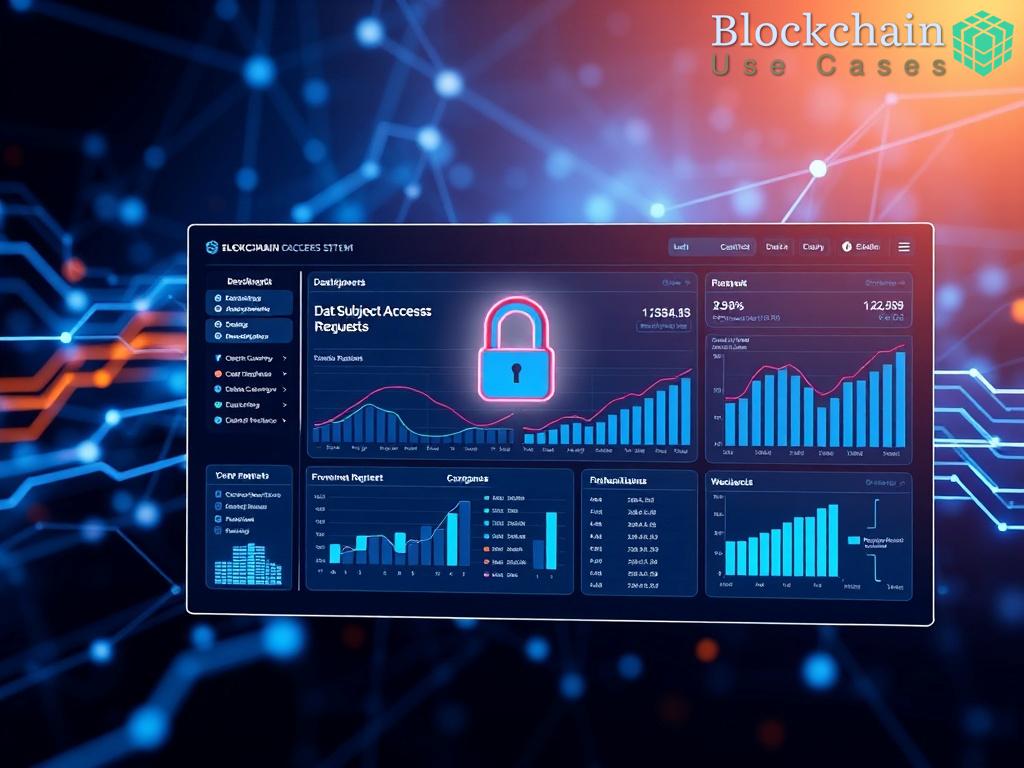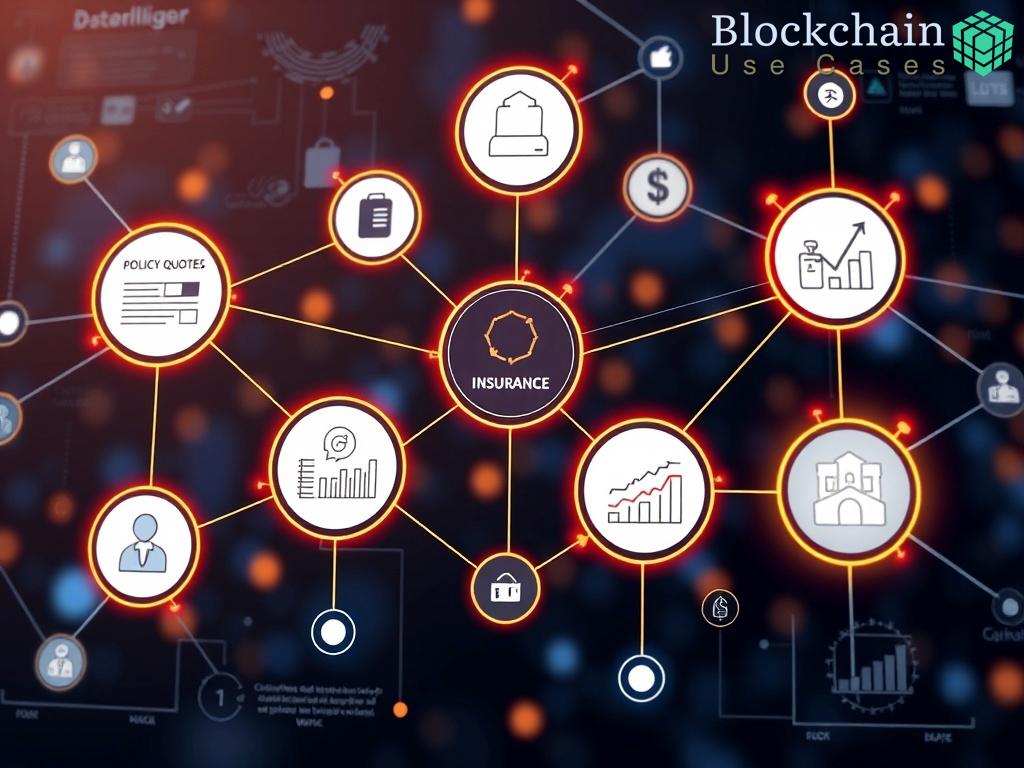Understanding Blockchain Technology in Insurance
In recent years, blockchain technology has emerged as a revolutionary force across multiple industries, with the insurance sector being no exception. This decentralized digital ledger system has gained traction for its ability to enhance transparency, security, and efficiency in various processes, particularly in claims processing. The integration of blockchain into insurance claims is not just about leveraging a technological trend; it’s about fundamentally altering how trust and data integrity are maintained in an industry often plagued by fraud.
Claims processing in traditional insurance frameworks has always grappled with issues related to fraud, miscommunication, and inefficiencies. Blockchain addresses these challenges by providing a transparent, immutable record of all transactions related to a policy. Each claim, once submitted, gets recorded on the blockchain, ensuring that all parties have access to the same information in real-time. This transparency minimizes discrepancies and disputes, allowing for faster claims resolution.
- Increased Accountability: Every transaction is timestamped and attributed to a unique user, which discourages fraudulent activities.
- Real-Time Data Access: All stakeholders, including insurers, insured parties, and third-party assessors, can access the same data simultaneously.
- Immutable Records: Once data is recorded on the blockchain, it cannot be altered, which protects against manipulation.
The Internet of Things (IoT) plays a critical role in augmenting the capabilities of blockchain in insurance claims processing. By harnessing IoT devices, insurers can collect real-time data from insured assets, which can be automatically recorded on the blockchain. This synergy not only streamlines the claims process but also enhances the accuracy of the information provided.
| Benefit | Description |
|---|---|
| Fraud Detection | IoT devices provide real-time monitoring, allowing for immediate detection of anomalies that could indicate fraudulent claims. |
| Automatic Claims Processing | Smart contracts on the blockchain can automate claims payouts when certain conditions are met, reducing delays and human errors. |
| Cost Efficiency | By minimizing fraud and expediting the claims process, insurers can reduce operational costs significantly. |
Ultimately, the convergence of blockchain technology and IoT in insurance claims processing offers a promising pathway to mitigate fraud, enhance operational efficiency, and restore consumer confidence in the insurance sector.
The Role of IoT in Claims Processing
The integration of IoT devices into the insurance landscape is not merely an enhancement; it represents a paradigm shift in how claims are processed. By embedding smart technology into insured assets, insurers can tap into a continuous flow of data that provides unparalleled insights into the condition and usage of those assets. This capability allows for a proactive approach to claims management, fundamentally changing the dynamics of trust and verification in the insurance ecosystem. The role of IoT in claims processing is pivotal as it underpins the effectiveness of blockchain technology in curbing fraudulent activities.
When IoT devices are deployed, they create a robust framework for data collection that feeds directly into the blockchain. This synergy ensures that each interaction with an insured asset is accurately recorded on an immutable ledger, fostering a culture of transparency that is vital in insurance. By utilizing real-time monitoring, insurers can track the state of a policyholder’s asset at any given moment, significantly reducing the opportunities for fraudulent claims. Moreover, the instantaneous nature of IoT data collection allows insurers to respond to unusual patterns or anomalies swiftly, thereby mitigating potential losses.
The promise of smart contracts, powered by blockchain, further elevates the role of IoT in claims processing. These contracts can be programmed to execute automatically when specific conditions, verified by IoT data, are met. For instance, if an IoT device detects that a vehicle has been involved in an accident, the smart contract can trigger an automatic claims payout, significantly reducing the time and effort typically required for claims processing. This combination of IoT technology and blockchain not only expedites the claims process but also reinforces the integrity of the information being processed, creating a fortified shield against fraud.
Fraud Detection Mechanisms Enhanced by Blockchain

The intersection of blockchain technology and the Internet of Things (IoT) has given rise to innovative fraud detection mechanisms that are transforming the insurance landscape. With insurance fraud costing billions annually, the need for robust systems that can identify and mitigate fraudulent claims has never been more critical. In this evolving environment, blockchain serves as a key player, ensuring that the integrity of data collected from IoT devices is maintained while simultaneously enhancing the capabilities of fraud detection.
Immutable Data Records as a Pillar of Trust are foundational to the efficacy of fraud detection mechanisms within blockchain-enabled IoT insurance systems. Each transaction or data point captured by IoT devices is recorded on a blockchain, creating an unalterable history that can be accessed by all relevant stakeholders. This transparency is crucial in establishing trust among insurers, policyholders, and third-party assessors. By having access to a shared, tamper-proof ledger, parties can easily verify the authenticity of claims and challenge any discrepancies that may arise.
The integration of smart contracts further revolutionizes the way fraud is detected and managed. These self-executing contracts can be programmed with specific criteria that trigger automatic actions based on real-time data from IoT devices. For instance, if a sensor detects an irregularity in a vehicle’s operational status that contradicts a claim, the smart contract can instantly flag the claim for further investigation. This proactive approach not only curtails fraudulent activities but also accelerates the claims resolution process by swiftly identifying potential red flags.
Moreover, the synergy between blockchain and IoT enhances real-time monitoring, which is instrumental in fraud detection. Insurers can now harness continuous data streams from connected devices, allowing them to track the status and usage of insured assets at any given moment. This real-time visibility means that deviations from expected patterns can be detected immediately, enabling insurers to respond promptly to potential fraud attempts. For example, if a policyholder submits a claim for theft but the IoT device indicates that the asset was never moved from its original location, insurers can quickly identify the inconsistency and take appropriate action.
In conclusion, the fraud detection mechanisms bolstered by blockchain technology and IoT offer a promising solution to one of the insurance industry’s most pressing challenges. By leveraging immutable data records, automated smart contracts, and real-time monitoring, insurers can not only reduce the prevalence of fraudulent claims but also enhance overall operational efficiency. As these technologies continue to evolve, they are set to redefine the future of insurance, creating a more secure and trustworthy environment for all stakeholders.
Case Studies: Successful Blockchain Implementations
As the insurance industry grapples with the challenges posed by fraudulent claims, several pioneering companies have turned to blockchain technology to redefine their approach. These case studies illustrate not only the potential of blockchain but also its tangible benefits in real-world applications. By leveraging the synergy between blockchain and IoT, these organizations are setting new standards for transparency and trustworthiness in claims processing.
One standout case is that of InsureTech Co., which integrated blockchain with IoT devices to monitor the condition of insured vehicles in real-time. By employing IoT sensors that collect data on vehicle performance and usage, the company creates a continuous stream of information that is recorded on a blockchain. This implementation has proven essential in minimizing fraudulent claims, as the immutable records provide irrefutable proof of the vehicle’s status during accidents or incidents. Moreover, the deployment of smart contracts ensures that payouts are executed automatically once certain verified conditions are met, expediting the claims process while reducing the risk of human error.
Another compelling example can be found in the partnership between Global Insurance Group and a blockchain technology provider. Together, they developed a decentralized claims processing platform that utilizes IoT data from various sources, such as home security systems and telematics in vehicles. This collaborative ecosystem allows for the seamless exchange of information among all parties involved, ensuring that everyone has access to the same verified data. The transparency afforded by blockchain not only fosters trust among policyholders and insurers but also significantly reduces the potential for fraudulent claims. This success story underscores the notion that when multiple stakeholders contribute to a shared ledger, the overall integrity of the claims process is enhanced.
These case studies exemplify how blockchain technology, when combined with IoT capabilities, can transform the insurance claims landscape. By establishing a foundation of transparency and accountability, these innovative implementations are paving the way for a more secure and efficient future in insurance, ultimately benefiting both insurers and policyholders alike.
Future Trends: Blockchain and IoT in Insurance
The landscape of insurance is on the brink of a transformative shift as organizations increasingly recognize the potential of blockchain technology and the Internet of Things (IoT) in revolutionizing claims processing. With the ongoing evolution of these technologies, we can anticipate a future where fraud becomes a relic of the past, and transparency, efficiency, and trust reign supreme in the insurance sector. As insurers continue to explore innovative solutions, the convergence of blockchain and IoT will redefine operational paradigms and enhance customer experiences.
Enhanced Predictive Analytics and Risk Assessment will be crucial in shaping the future of insurance. By leveraging the vast amounts of data collected from IoT devices, insurers can harness predictive analytics to assess risks more accurately. The integration of blockchain ensures that this data remains secure and tamper-proof, allowing for real-time adjustments in policy pricing and terms based on the actual behavior and conditions of insured assets. This capability will not only improve risk management but also foster a more personalized approach to insurance coverage, ultimately reducing the likelihood of claims fraud.
Moreover, the role of smart contracts will continue to expand, automating various processes and drastically improving the claims experience for policyholders. As these contracts become more sophisticated, they will be able to execute complex conditions based on data from IoT devices. For instance, an automated claims payout for a car accident might be triggered by a combination of data inputs, such as vehicular speed, location, and sensor readings. The ability to process claims without human intervention will significantly cut down on fraudulent activities and streamline operations, leading to faster resolutions and increased customer satisfaction.
The Rise of Collaborative Ecosystems is another trend set to shape the future of insurance in the blockchain and IoT space. Insurers, technology providers, and third-party assessors will increasingly collaborate to create shared ecosystems that foster data exchange and transparency. This collaboration will enable the development of comprehensive platforms that integrate various data sources, enhancing the accuracy of claims processing and fraud detection. With shared ledgers accessible to all stakeholders, discrepancies can be quickly identified and resolved, creating a seamless flow of information that strengthens trust and accountability within the industry.


















